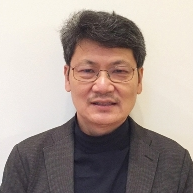Holographic Information Processing
A special issue of Photonics (ISSN 2304-6732).
Deadline for manuscript submissions: 31 October 2024 | Viewed by 4499
Special Issue Editors
Interests: digital holography and deep learning
Interests: digital holography
Interests: digital holography
Special Issues, Collections and Topics in MDPI journals
Interests: digital holography specializing on optical scanning holography; 3-D optical image processing and holographic display; computer-generated holography; holographic remote sensing; holographic microscopy
Special Issues, Collections and Topics in MDPI journals
Special Issue Information
Dear Colleague,
This is a Special Issue concerned with digital holography. With this Special Issue, we call for research papers in the areas of coherent and incoherent digital holography, optical scanning holography, holographic display, holographic cryptography, and holographic information processing in general.
Research using machine learning, deep learning, and other artificial intelligence technology for holographic information processing is especially welcomed. Both fundamental and applied research studies are suitable for this Special Issue.
We are looking forward to receiving your manuscripts.
Dr. Xianfeng Xu
Dr. Hongbo Zhang
Dr. Wen-Jing Zhou
Prof. Dr. Ting-Chung Poon
Guest Editors
Manuscript Submission Information
Manuscripts should be submitted online at www.mdpi.com by registering and logging in to this website. Once you are registered, click here to go to the submission form. Manuscripts can be submitted until the deadline. All submissions that pass pre-check are peer-reviewed. Accepted papers will be published continuously in the journal (as soon as accepted) and will be listed together on the special issue website. Research articles, review articles as well as short communications are invited. For planned papers, a title and short abstract (about 100 words) can be sent to the Editorial Office for announcement on this website.
Submitted manuscripts should not have been published previously, nor be under consideration for publication elsewhere (except conference proceedings papers). All manuscripts are thoroughly refereed through a single-blind peer-review process. A guide for authors and other relevant information for submission of manuscripts is available on the Instructions for Authors page. Photonics is an international peer-reviewed open access monthly journal published by MDPI.
Please visit the Instructions for Authors page before submitting a manuscript. The Article Processing Charge (APC) for publication in this open access journal is 2400 CHF (Swiss Francs). Submitted papers should be well formatted and use good English. Authors may use MDPI's English editing service prior to publication or during author revisions.






